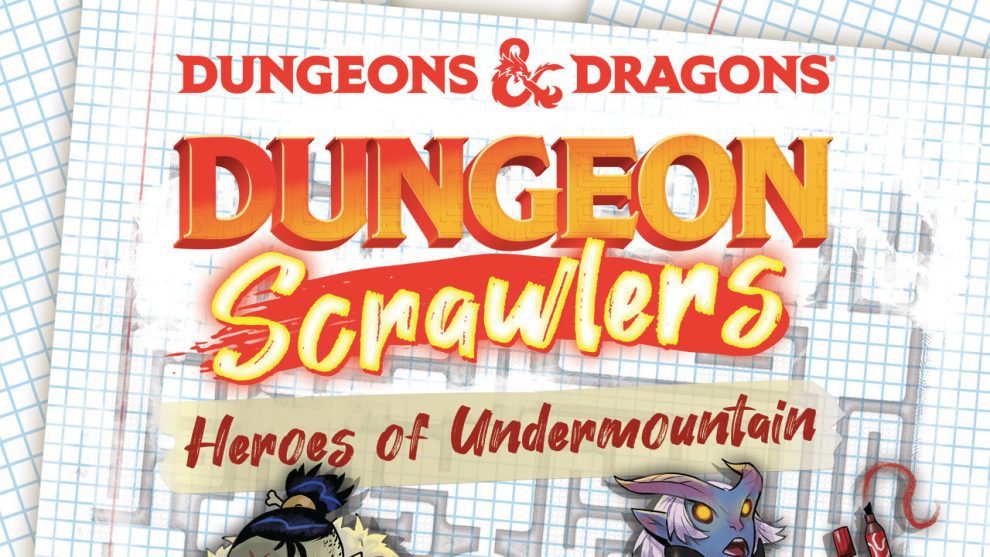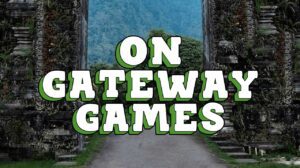Disclosure: Meeple Mountain received a free copy of this product in exchange for an honest, unbiased review. This review is not intended to be an endorsement.
Dungeon Scrawlers: Heroes of Undermountain is one of the latest products to bear the seal of Dungeons & Dragons, that venerable roleplaying game which has become almost synonymous with the idea of a dungeon dive. In RPG parlance, a dungeon dive is when a group of characters enter a monster-filled labyrinth in search of treasure. Dungeon Scrawlers takes that inspiration and turns it instead into a 15-minute race among players to find the best route through a maze, knocking out enemies and grabbing treasure in their quest to be the victor! (To be clear, no experience with RPGs is necessary to play, though you might be interested in reading our article on why you should play an RPG.)
On Your Markers, Get Set, Go!
Dungeon Scrawlers: Heroes of Undermountain is about as easy to learn as any game could be. Each player takes a dry-erase marker and a set of three dungeon maps. There are ten unique maps in total (five double-sided sheets per player) and the group will collectively choose which three to tackle each game. Each map is a round of play, and the player with the best cumulative score at the end of those three rounds is the winner!
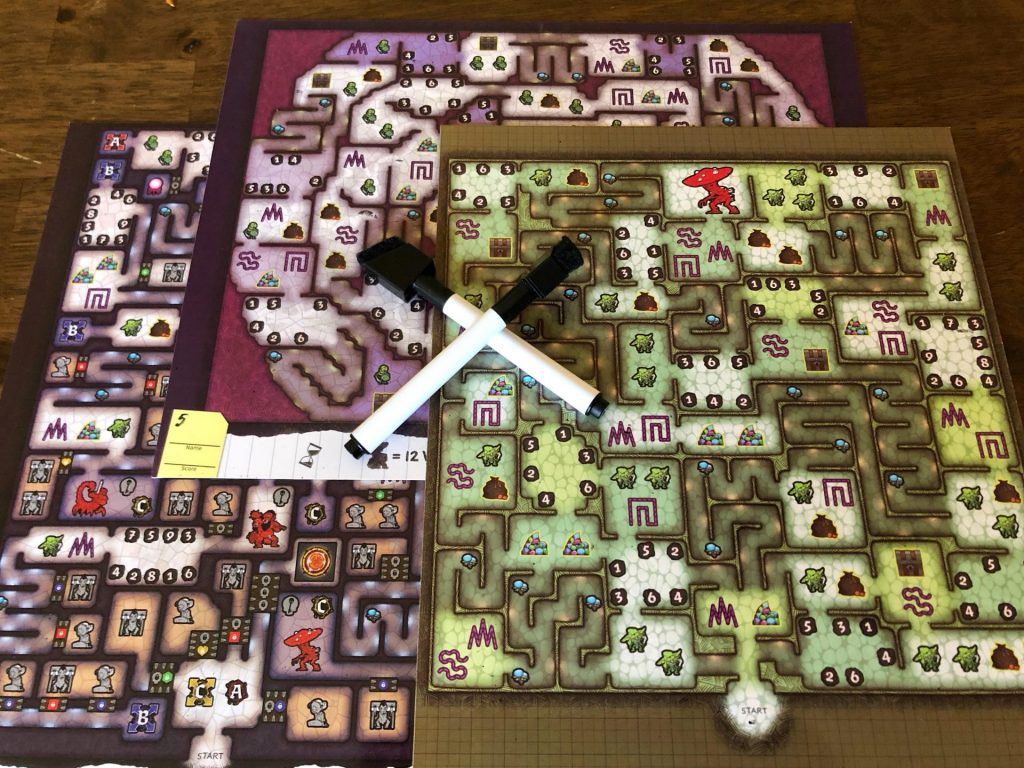
When it’s time to start, each player will start drawing a continuous line on their sheet beginning at the map’s START space. That line can cross it over itself, allowing players to find the best route through the dungeon. Maps are full of scoring elements and each type requires a different method to show that it’s been completed: when a player reaches an icon they’ll need to touch, trace, outline, cover, or strike through it to gain points.
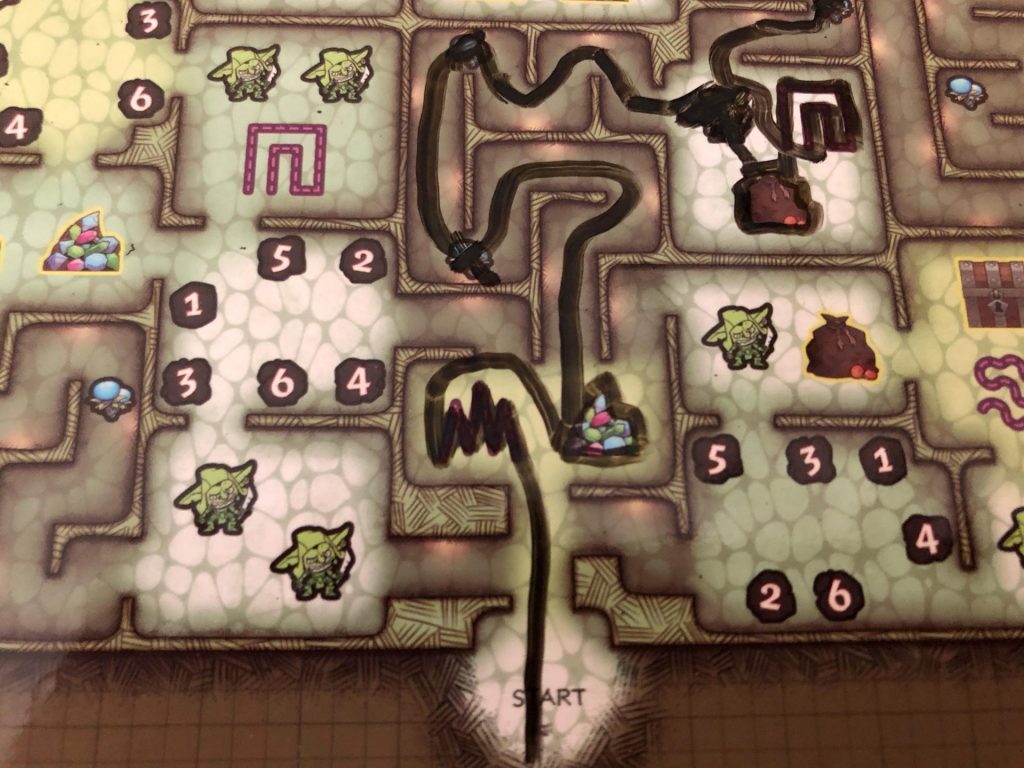
Depending on the map, the round may end when a player defeats a central boss, after a certain amount of time has passed, or when a special rule has been fulfilled. Many rounds take two minutes or fewer to play, after which players pass each other their sheets for scoring and then move onto the next map or total up the scores to figure out who won.
Scoring is fairly straightforward: treasures, monsters, plants, and spells are all worth a single point if handled correctly. Artifact stones come in a large group and are worth either two or three points depending on size. Boss monsters are worth a few extra points, and later rounds introduce captive prisoners who can be freed for a point as well as orbs which score more points for players who reach them earlier. Players can also lose points for failing to complete scoring elements they’ve encountered, for crossing through a wall, or for touching “off limits” areas on the map.
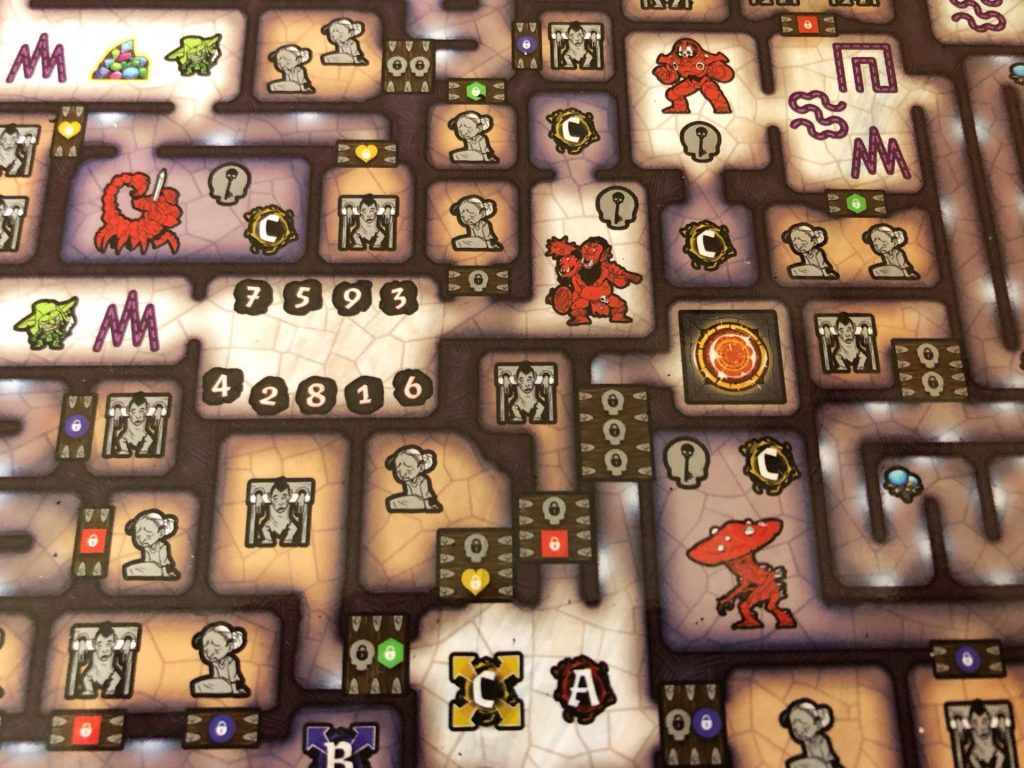
There are some other fun wrinkles to keep things interesting. At the start of the game, each player chooses one of the character roles which slightly tweak the requirements for completing a scoring element. Each map offers a variety of paths, allowing players to tailor their run to their role in hopes of racking up lots of points. The more advanced dungeons are devilishly difficult to navigate, introducing several different colors of keys to unlock doors and lettered teleportation portals that players must use to travel to other areas of the map. Since each game involves three chosen maps, players can mix the easier starting layouts with some of these more complicated ones or focus on the hardest challenges to really test their maze-solving skills!

We Could Be Heroes (Just For One Play)
Dungeon Scrawlers: Heroes of Undermountain immediately appealed to me on the basis of its theme. I was obsessed with roleplaying games starting in elementary school, and Dungeon Scrawlers’ aesthetic — the graph paper maps, the stickers pasted on the black-and-white notebook cover, the boss monsters pulled from classic Dungeons & Dragons books — captures that spirit perfectly. Those details offer a nice thematic nod for old-schoolers without cutting out players who don’t have that background.
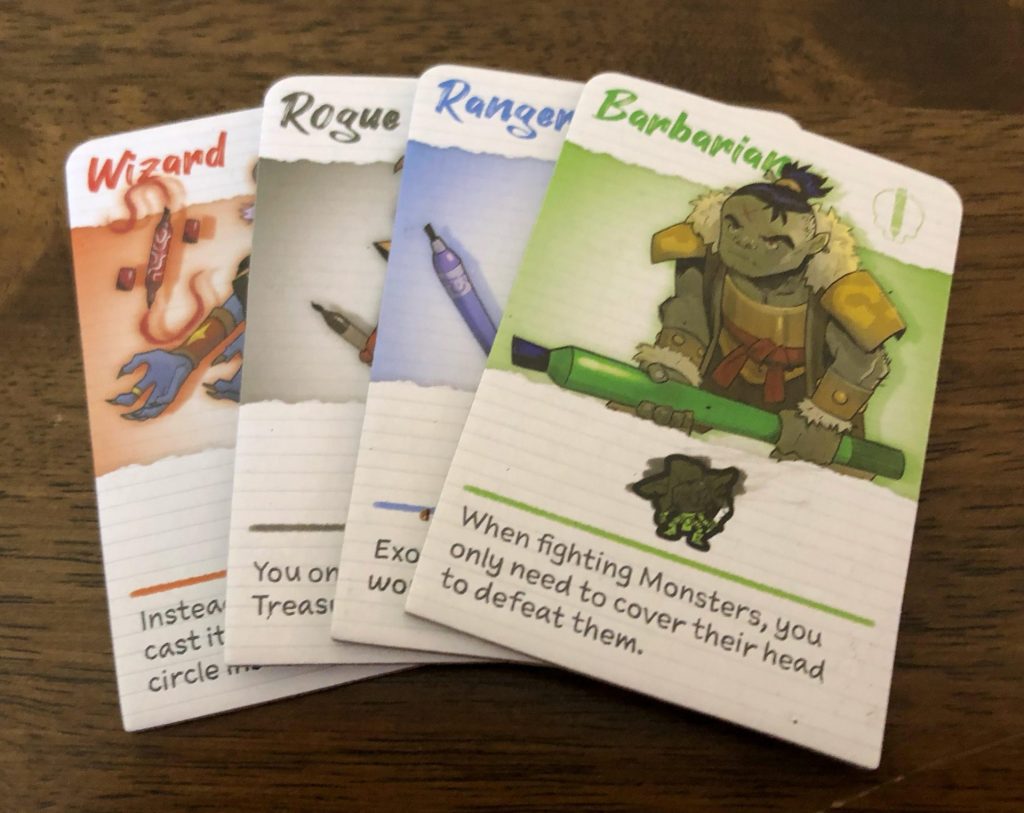
Dungeon Scrawlers’ greatest strength lies in its real-time nature. Racing against the clock (and the other players) is fast, frantic, and indisputably fun. Though it’s essentially a “multiplayer solitaire” experience, it’s ripe for trash-talking as players close in on a boss or hit a good cluster of points right at the buzzer.
As soon as the timer sounds, though, Dungeon Scrawlers becomes a lot less fun. Scoring in this game can be tedious, undercutting the game’s best feature. The icons on the map are fairly small, making it easy to miscount. At higher levels, the complicated paths through the dungeon can be hard to check for legality, especially if a player backtracked through an area that wasn’t initially accessible. And woe to the player who must judge a sheet full of smudged or partially-erased lines due to someone else’s errant sleeve!

With a game like this, it’s possible that some players will memorize or intuit the “best” path more easily than others. Truthfully, it never came up in my playthroughs — and I played it a lot! So much, in fact, that the included dry-erase markers all failed before I was done getting my enjoyment out of it. (Which may also be a sign that the markers don’t last quite as long as they ought to.) Still, if someone’s regularly seizing first place, it’s easy enough to add house rules like head starts or slightly tweaked scoring. Conveniently, those changes can also be used to help younger kids stay competitive with adults.
Despite its annoying scoring periods, Dungeon Scrawlers: Heroes of Undermountain is an absolute blast to play. It’s a light, breezy romp that does exactly what it promises. I can easily see running through a few rounds of this before or after a session of D&D (or one of these RPGs that share some common elements with D&D). Gather your party and delve into Dungeon Scrawlers today!


